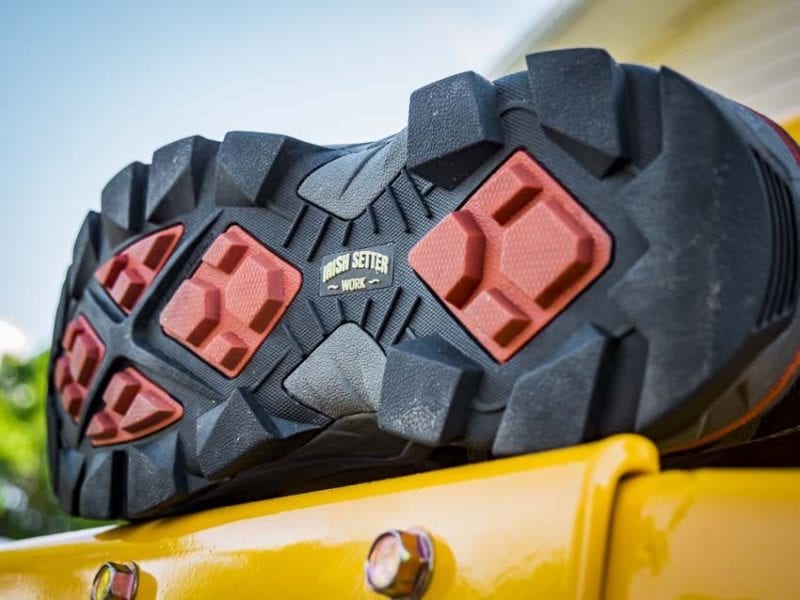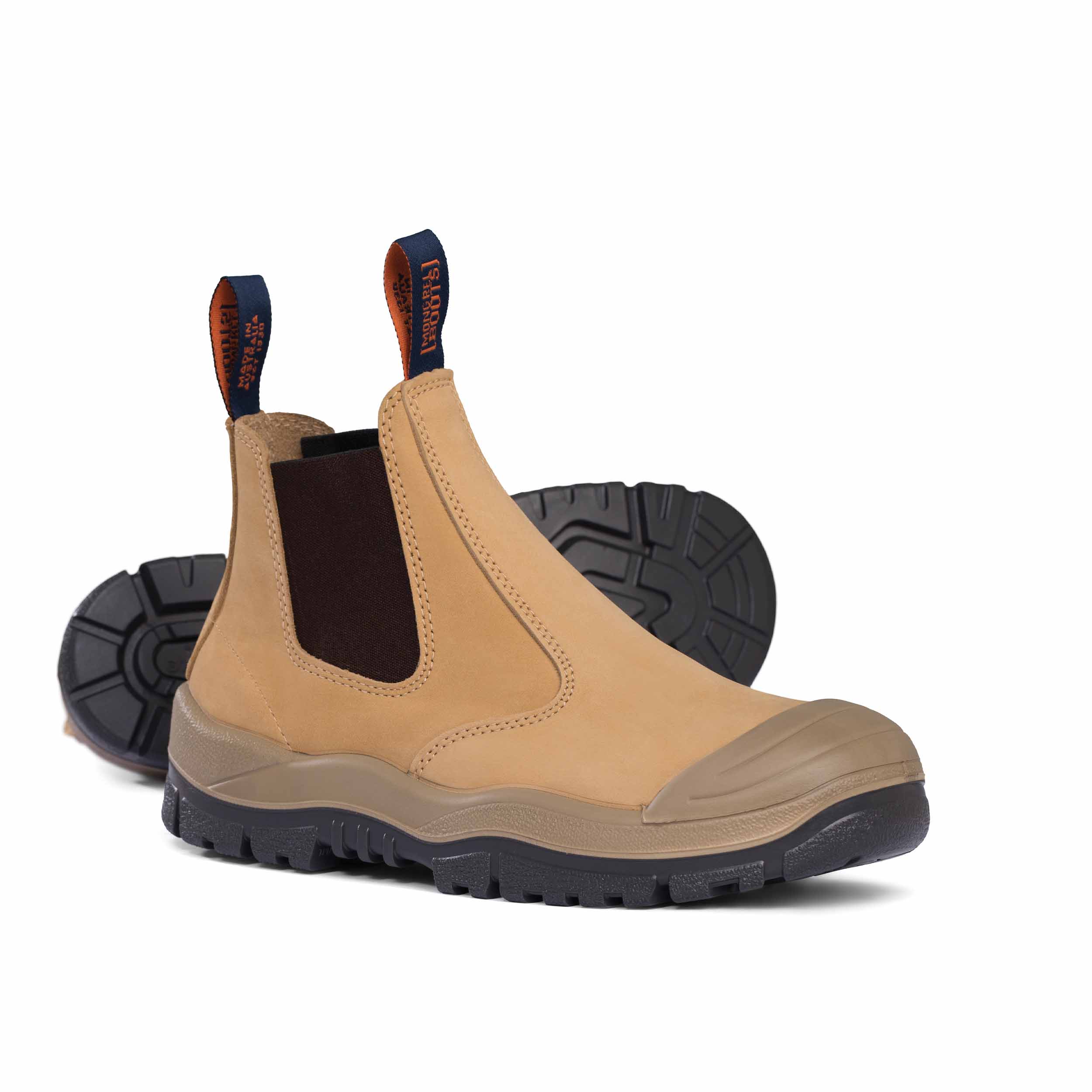Are you an electrician in search of the best work boots to safely navigate through your daily tasks? Look no further!
This comprehensive guide will provide you with all the information you need to find a pair of boots that fit your needs. You’ll be sure to find the perfect gear that keeps you safe and comfortable while on the job!
Many electricians value the importance of having protective work boots. In this guide, we’ll cover all the essential features that make up a quality pair of work boots for electricians. This includes defining various features, why each is important, and a few recommendations for boots to consider that provide all these features.
We’ll begin by discussing the three main components of any pair of shoes — safety, comfort and durability. Then we’ll cover specific areas like electrical hazard rating, insulation ensuring there is no build-up of static electricity and non-metal toe protection, heat resistance (an added bonus) and soles that offer traction control — all crucial aspects when it comes to work boots for electricians. Finally, we will provide some great recommendations based on our research so you can make an informed decision on the perfect pair of shoes for your needs.

Safety features to consider in work boots for electricians
It’s essential to select a pair of work boots that offers the safety features electricians need most. While features vary depending on the brand and model you choose, there are certain components that are paramount when making your selection. Here we outline some of the most important safety features to consider when shopping for work boots for electricians.
Insulated Boots: There is no substitute for insulated boots when working in an environment exposed to electricity. Electricians need to protect themselves from shock, so it’s essential to look for models with insulation to provide maximum protection against electricity. The insulation should offer an adequate level of coverage that extends from the top of the foot all the way up the calf and shin area, but be sure not to sacrifice breathability and mobility for too much insulation!
Protection Against Sharp Objects: Many electrician jobs expose workers to sharp or pointed objects. To protect against such hazards it’s wise to invest in a good pair of work boots with reinforced toe boxes and midsole protection with puncture-resistant technology built into the sole design.
Slip resistant construction: Electricians often must maneuver through wet or slippery surfaces while on a job site, so it’s pivotal that built-in slip resistance features are considered when selecting your work boot model. Look for materials such as rubber outsoles or TPU soles with multi-directional lug patterns designed specifically for secure traction control on both wet and dry surfaces.
Waterproof construction: Working in flooded basements or outdoors in wet weather conditions can all too easily result in waterlogged footwear leaving workers uncomfortable and at risk for developing serious health issues due to dampness and chilliness, so opting for waterproof materials is a must when considering your best options. Fully waterproof uppers provide excellent protection, while waterproof membranes offer added assurance by blocking moisture ingress into the innermost layer of your boot where it could cause discomfort due to blisters or painful pressure points caused by excess water saturation inside shoe materials.
Electrical hazard protection
Electricians require sturdy and safe work boots for protection from potential electrical hazard exposure. The United States Occupational Safety and Health Administration (OSHA) has specific requirements as far as electrical safety in the workplace. For example, electricians must wear protective footwear that is made from materials that are resistant to electric shock, provides good insulation, is durable to withstand the wear and tear of installation or repair work, and offers enough traction to prevent slipping on wet surfaces. OSHA also stipulates that protective footwear must completely cover the feet including the ankle area or have guards that enclose at least three-quarters (¾) of the heel height of the foot covering.
When looking for electrical hazard (EH) rated boots specifically designed for electricians working with direct exposure to electricity up to 600 volts, it is important not only to be aware of its specifications but also understand how it provides protection against electric shock hazards. An EH rated boot indicates that it meets ASTM F2412 and F2413 test standards which evaluate its impact resistance, compression resistance, metatarsal protection, puncture-resistant sole, static dissipative properties and sole flexibility among other protective features. The higher the EP rating (Electrical Protective Footwear [EP] = Electrical Protective Rating + Compression Strength & Impact Rating), such as EP/150/75 or EP/75/75, indicates greater level of protection against electric shock for EH rated boots.
Slip-resistant outsole
When looking for work boots for electricians, one of the most important features is a slip-resistant outsole. An electrician’s work often involves going up and down ladders and working in wet or slippery conditions. So, having a sturdy pair of boots with good grip will help keep you safe and prevent any unfortunate accidents from occurring.
Slip-resistant outsoles are usually made from rubber compounds, which add traction to keep you steady as you move around. Look for shoes with tread patterns that are designed to grip surfaces in different directions, such as ridges or waves that provide better maneuverability on steep or slippery surfaces.
Comfort and fit considerations
Having a good-fitting and comfortable pair of work boots is essential for any electrician. Improperly fitted footwear can lead to serious foot problems and make your job that much more difficult. When choosing work boots, you should look for boots that provide the following features:
1) Arch Support: A supportive arch in your work boot can help keep your feet in their proper alignment to reduce fatigue and discomfort. Look for a contoured footbed or an EVA foam footbed with enhanced arch support.
2) Shock Absorption: Shock-absorbing midsoles or cushioning systems will help reduce the stress on your feet and ankles as you move around on job sites all day, helping prevent soreness or injuries from developing.
3) Fit: When trying on a new pair of work boots, make sure there is enough room to wiggle your toes comfortably and that they are snug enough to stay put without feeling restrictive. Additionally, look for laces or hook-and-loop closures around the top so you can customize the fit just right.
Arch support and cushioning

Good arch support and cushioning are especially important when selecting work boots for electricians. It’s essential to choose boots with arch support designed to relieve pain from plantar fasciitis and other foot problems. Cushioned insoles provide shock absorption for long days on your feet, and help protect your feet from injury associated with heavy machinery.
Make sure your boots fit properly and have plenty of cushioning in the heel, arch, and toe areas. When trying on work boots, walk around for a few minutes to make sure you feel comfortable in them.
Breathable materials
Breathable materials like mesh and soft leather are important for electricians, who are often working in uncomfortable conditions. Breathable material helps to move heat out of and away from their feet, keeping them dry and cool throughout the work day. Leather is a durable material but can be stiff and heavy; look for lighter leathers or use other breathable materials like synthetics when possible.
Additionally, moisture-wicking linings and antimicrobial treatments can help keep feet dryer for an extended period of time. Cross-trainers with air pockets or air cushions can also provide superior breathability and comfort for electricians.
Additional features to consider
When choosing the right electrician boots, consider some other features besides safety and comfort. Some additional features that you may want to look for include:
- Water Resistance: Selecting boots with waterproof-treated leather uppers will help keep your feet dry and safe. This is especially important for those who work in wet or damp environments such as construction sites or electricians who often work in lightning protection systems.
- Slip Resistance: The outsole of your work boot should feature slip-resistant treads with adequate gripping power to protect you from falls or slips on slippery surfaces. There are various tests that can be conducted by the manufacturer to rate the level of slip resistance of a sole, so research these ratings when making your selection.
- Flame retardant: Some employers may require their electricians to use flame retardant boots while on the job, so it is important to check with them before purchasing a pair. Flame retardant materials will help reduce the risk of serious injury in the event of a fire or explosion.
- Toe Caps: Steel toe caps provide extra protection against compression and impact injuries caused by heavy objects falling on your toes while working. Other toe cap materials such as aluminum, composite and titanium are also available, but they do not offer as much protection as steel toe caps.
Insulated boots for cold weather

When shopping for work boots, it’s important to find ones that offer the right amount of insulation and are rated for protection against electrical shocks. Look for boots with insulation materials such as Thinsulate or wool, which offer excellent protection from the cold. Additionally, look for boots made with durable materials like leather and canvas, as these will be able to withstand wet conditions.
Furthermore, make sure that the boots you choose have toe guards to provide extra protection when handling electricity. Electricians working in cold weather may also want to look for boots that allow additional layers of socks in order to maximize warmth.
Finally, look for water-resistant boot finishes so your feet will stay dry and comfortable during cold weather workdays.
Lightweight and flexible options
Lightweight electrician boots are great for jobsites that require lots of moving around, such as traveling from one building to another. There tend to be fewer heavy-duty features on these boots, so they can be a bit more affordable. Additionally, they often feature thinner outsoles which are ideal for crawling around tight spaces. To ensure safety is not compromised by lightweight options, look for those with reinforced toes and heels. It’s also important to make sure the upper material is breathable and flexible as they can be worn in extended periods with less fatigue.
When shopping for this style of electrician boot, consider materials like split grain leather and tough synthetics that provide strength and flexibility without weighing you down. Other features such as composite shanks may add needed stability while still saving weight. Electrical hazard rated outsoles will protect against open circuits up to 18KV and should always be preferred in this type of work environment. Additional features like oil-resistance, waterproofing, or slip-resistance may also come in handy depending on the type of worksite you’ll be working on most frequently.
Boots with extra ankle support
If you’re an electrician who works in hazardous locations (such as construction sites or near electrical wiring), you need to find boots that can provide extra ankle support. The right boot can help keep your ankles safe and secure while giving you the traction you need on slippery surfaces. Here are some features to look for when choosing work boots with extra ankle support.
When selecting boots, find those that are well-constructed and made of quality materials such as leather, suede, and/or rubberized sole. Sturdy material is essential as it helps disperse heavy or sharp objects like nails, staples, or screws encountered while working. Look for boots that come with a reinforced toe box, ideally one that covers the top of the foot and curves up slightly around the toes. This type of support prevents your foot from rolling when coming into contact with something sharp or heavy.
Next consider if the work boot has an extended ankle collar made of an adjustable lacing system with eyelets or D-rings for a snug fit around your ankle and calf. This type of support provides additional security to help reduce potential twisting injuries common in outdoor worksites. Further, an efficient locking system—such as speed lacing—will allow for effortless on/off access in case adjustments need to be made quickly during times of prolonged standing or crouching motion scenarios. It should also provide extra arch support needed throughout long days at work while still being comfortable enough wear all day long without weighing down your feet too much.
Conclusion
Overall, when looking for the right pair of work boots for electricians, there are many factors to consider. Comfort is key and it’s important to find a pair that offer enough arch and ankle support as well as cushioning.
Additionally, it’s important to find a pair of boots that are appropriate for the type of work environment you are in. For example, if you’re working in damp conditions or on slippery surfaces, then you should look for waterproof material or slip-resistant soles.
Furthermore, always keep in mind the standard safety requirements and certifications established by OSHA and ASTM that dictate job-specific boot requirements before purchasing your footwear.
Additionally, pay special attention to your foot size when ordering any kind of equipment online; make sure they’re the correct size before you buy them to ensure optimum comfort and protection while on duty.

FAQ’s
What kind of boots should electricians wear?
Electricians should wear boots that are specifically designed for electrical work and have electrical hazard (EH) rating.
What makes a boot electrical rated?
A boot is electrical rated when it meets specific safety requirements and has insulating properties that protect the wearer from electrical hazards.
What should I look for in a work boot?
When looking for a work boot, you should consider factors such as comfort, durability, slip-resistance, support, and safety features.
What is required for an electrical safety boot?
Electrical safety boots must meet the standards set by the American Society for Testing and Materials (ASTM) and have an electrical hazard (EH) rating.
What is the difference between E and EEE boots?
E and EEE refer to the width of the boot. E is for medium width, while EEE is for extra wide width.
Do electricians need special shoes?
Yes, electricians need special shoes that have electrical hazard (EH) rating and provide protection from electrical hazards.
What must electrician shoes be made of?
Electrician shoes must be made of non-conductive materials that provide insulation from electrical hazards, such as rubber or leather.
What footwear is marked for electrical work?
Footwear that is marked with an electrical hazard (EH) rating is suitable for electrical work.
What are electrical hazard rated boots?
Electrical hazard (EH) rated boots are designed to provide protection from electrical hazards by insulating the wearer from electrically energized parts.
How can you tell if a boot is high quality?
You can tell if a boot is high quality by examining its construction, materials, and features. A high-quality boot should be durable, comfortable, and provide adequate protection and support.
See Also :
- Best work boots under $100 2023
- Best lightweight work boots 2023
- Best work boots for plantar fasciitis 2023
- Best lineman work boots 2023
- Best work boots for standing on concrete

